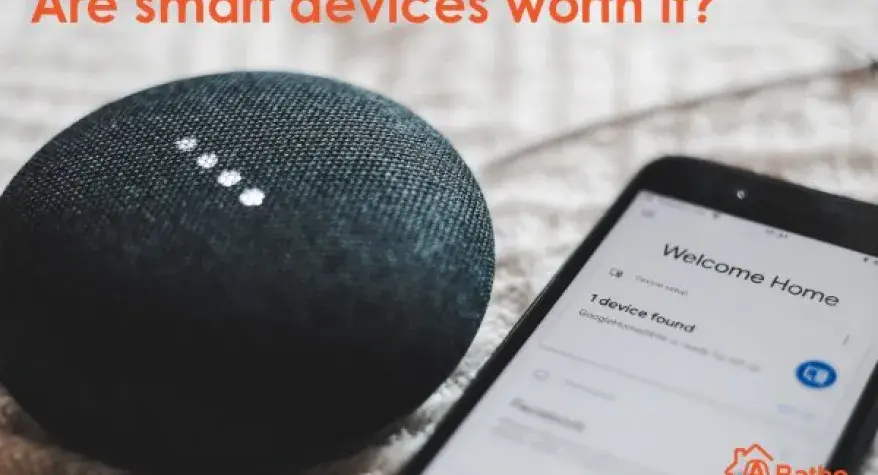Are smart devices worth it?
Gone are the days when energy saving meant wearing coats indoors. There are loads of great energy-saving gadgets out on the market at the moment that give a lot of control to the homeowner. This week, I have picked three smart devices that are rated some of the best tech this year. My main question is, when taking all their functionality together, is the effort of buying them and installing them going to be worth it in the long run? Are we, as the consumer, going to have more money in our pockets by the end of year?
The Philips Hue
1. Functionality
The Philips Hue is one of the most expensive smart bulbs on the market. It syncs with an app and allows you to control when the bulbs turn on and at what brightness the bulb shines. It can be used on a range of lights as a substitute for normal bulbs.
But, if you want to control the bulb while you are away from your home you do have to buy an additional gadget called the “Philips Bridge”, which adds to the cost.
2. Energy consumption
This smart bulb is more energy-efficient than other LED lightbulbs. At 50% brightness, it uses 3.2 Watts (according to the website’s online calculator), compared with a regular LED lightbulb, which uses 7-10 Watts. At maximum brightness, it uses 8.5 Watts but having control over how bright the bulb is can help you reduce the cost of your electricity consumption. You can control what brightness each bulb is set at, meaning that you spend more in locations in your house where you need better visibility.
Regular LED lights allow you to save between £2-3 per bulb every year by switching. So, with the chance to reduce the Philips Hue brightness to 50% or less, you could save a lot more per bulb, between £4-6 is a conservative estimate.
3. Conclusion
It is absolutely clear that switching to an LED lightbulb makes a significant impact on your energy bills. One of the key selling points of using a smart bulb, rather than just a regular LED is that you can control the brightness, shaving off more pennies, but you can also supplement your
However, I was disappointed that you need to buy an additional gadget to control the lights in order to get some of the main functionality that makes the product stand out from non-smart LEDs. Although saving £4-6 a year per bulb will add up to a lot if your home is big, it won’t necessarily have the same impact for a smaller home.
Overall, I would probably stick with regular LEDs.
The Amazon Echo Studio
1. Functionality
The Amazon Echo Studio allows you to listen to music anywhere in the house. It uses voice commands so that you can access your music throughout the house.
2. Energy Consumption
The thing to remember with smart speakers is that they have a standby mode. Using this mode is convenient, they switch on at the touch of a button or at a voice command. But it also means that the device is using power all the time. On standby, the Amazon Echo Studio uses 2.7 Watts. When you play music, and if you have the volume at 50%, the device uses 5.0 Watts. At maximum volume, with the bass turned up, the Echo Studio can use between 30 and 40 Watts.
3. Conclusion
If you love your music and do not mind keeping the volume low for the sake of your neighbours, this is definitely a good investment. The 5 Watt usage is very energy efficient when you take into account the joy you will get from the device.
However, if music is not your first love, I would question whether having a device constantly on standby is worth the additional power and therefore the additional drain on your energy bill. Might be better to just get a set of speakers for your smartphone.
Nest Thermostat
1. Functionality
The Nest Thermostat allows you to control the timings for your heating in a very precise way. You can set timings, temperature and control the device through an app when you’re away. This helps you to ensure your pipes do not become damaged through lack of use, but also that you are not necessarily heating your house when it is empty.
2. Energy Consumption
The Nest Thermostat does use a battery to operate but also needs to be plugged into the mains in order to keep the battery charged. It uses approximately 33 Watts a day to do so. But, consider how much money you will save on your heating bills by having a smart thermostat installed. On average, UK homeowners could save between 14% and 31% if they switch to a smart thermostat. This could be as much as £154 a year.
3. Conclusion
Buy this device! The amount of money you will save is well worth the investment. Even turning your heating down by one degree can save you money.
Gadgets that work for you
If you are a music lover, the Amazon Echo Studio will be a very good way of adding joy to your life, and this will offset the cost of having the device on standby.
In my opinion, I think that installing a smart thermostat is now a must for every household in the UK as the amount of money you will save will really be felt. Particularly as energy prices are exploding at the moment. I definitely advocate using LEDs instead of regular bulbs, but whether smart bulbs are worth it is debatable in my mind unless you have extensive grounds.
I think smart bulbs might actually be more cost-effective for businesses rather than residential properties, or landlords who are managing residential properties with communal spaces and the like. The real benefit is felt in the ability to control the bulbs remotely, rather than in the energy-saving quality.
The key to a lot of these gadgets is weighing up whether they will significantly add value to your life. They have to work around you and make life better for you if they are to be worth the investment.




